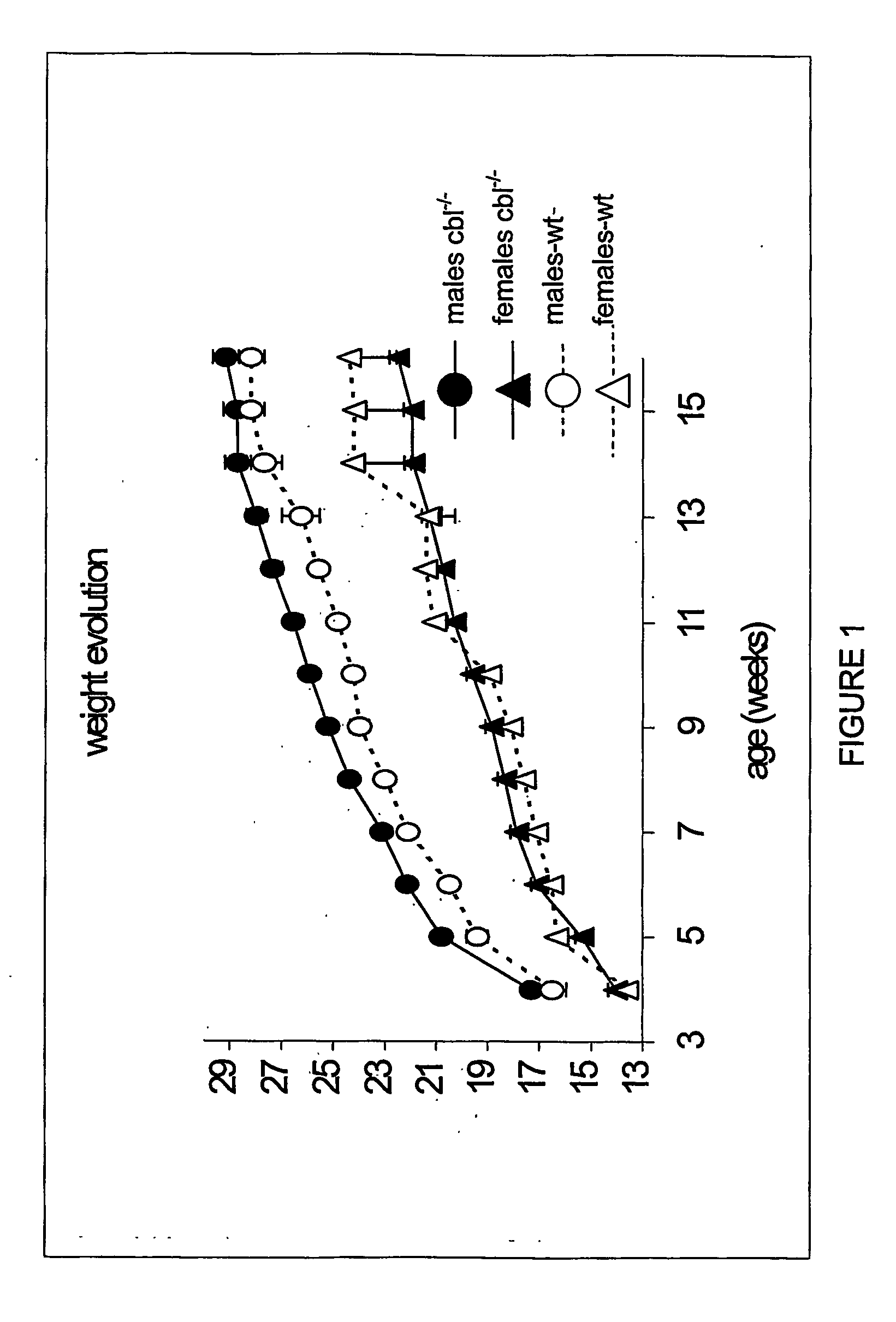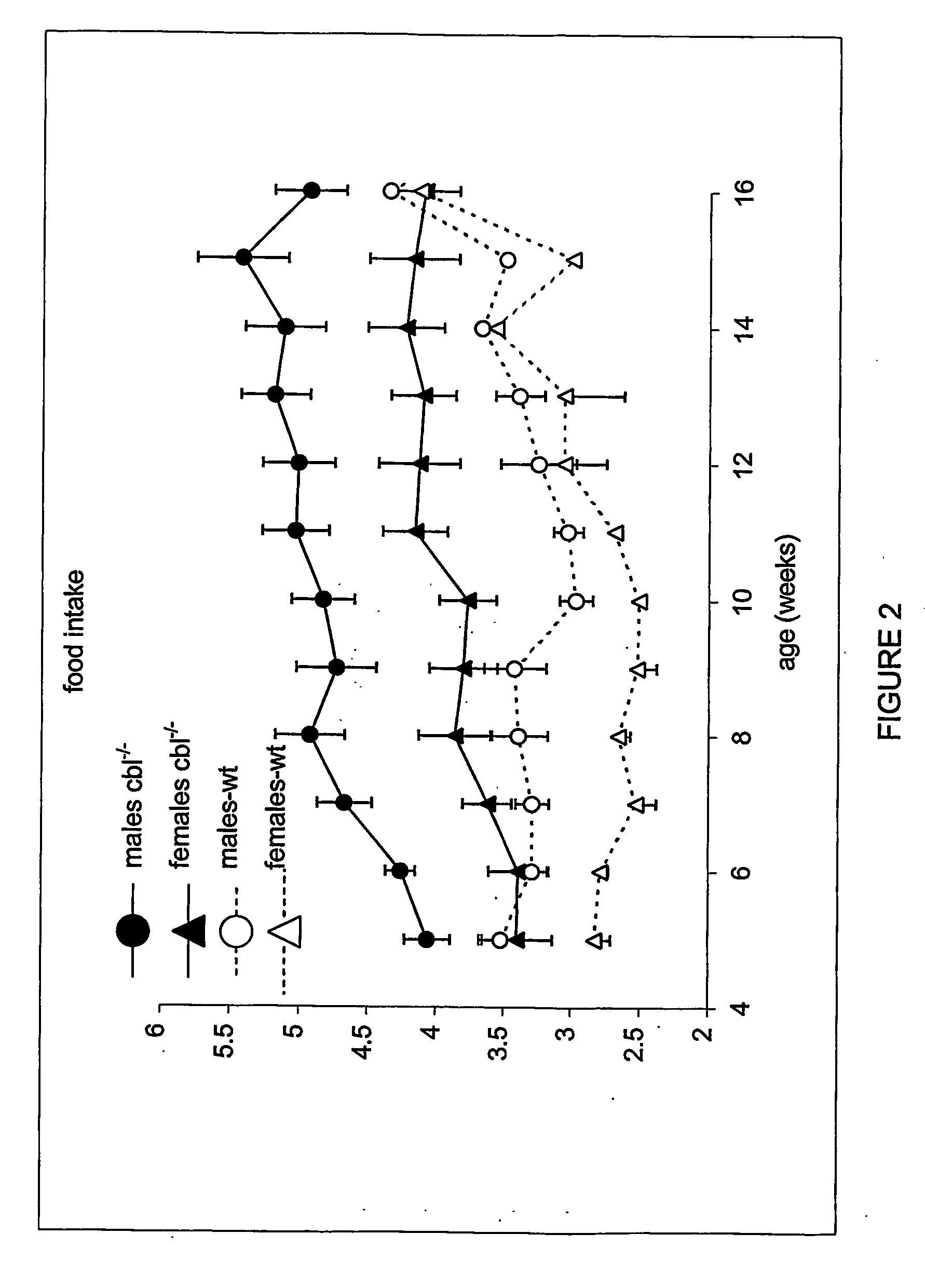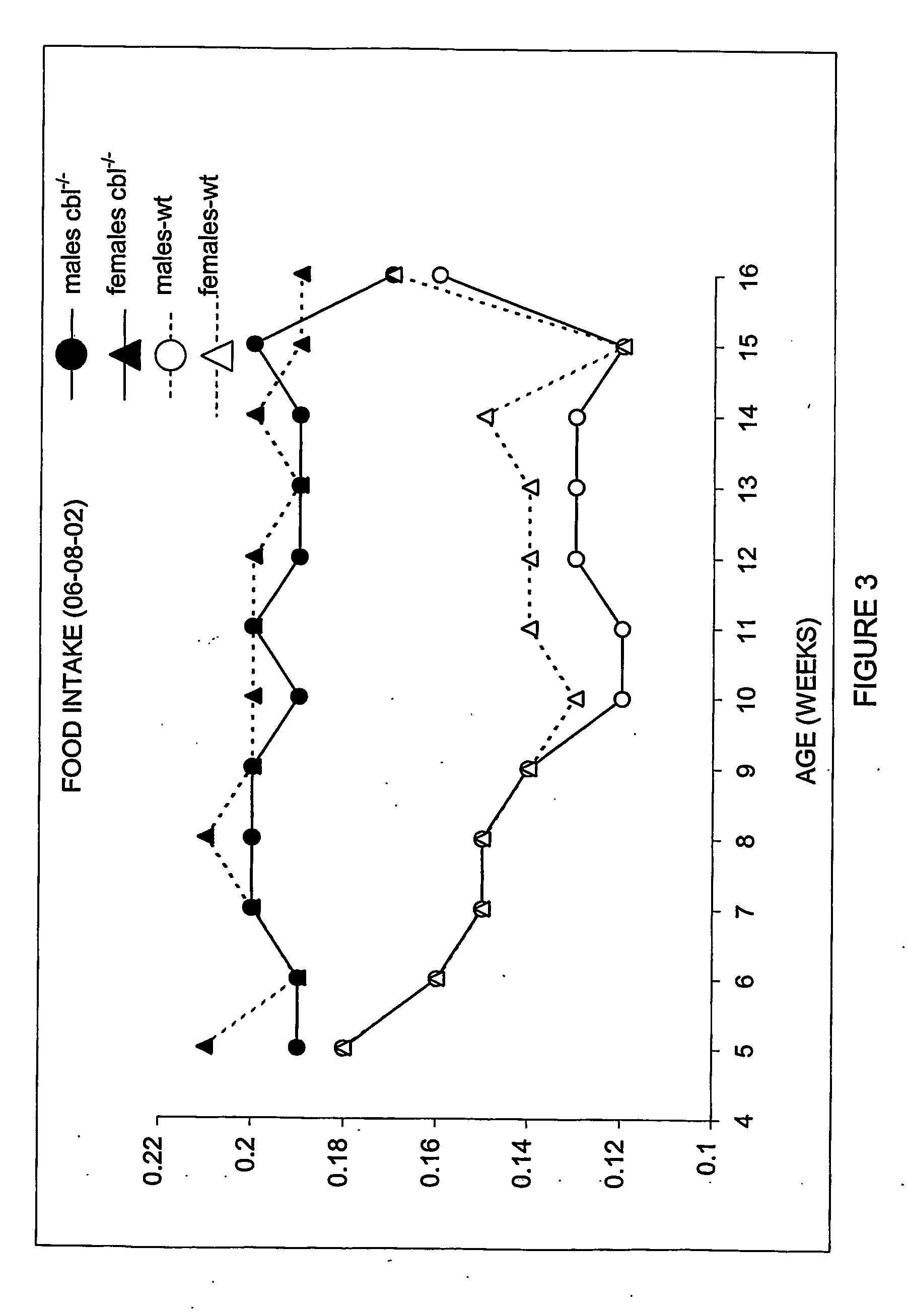Methods of treatment of feeding disorders or disorders of glucose uptake and for modifying metabolism and identifying therapeutic reagents therefor
- Summary
- Abstract
- Description
- Claims
- Application Information
AI Technical Summary
Benefits of technology
Problems solved by technology
Method used
Image
Examples
example 1
Methods
[0287] Animals were housed at the BTF facility of the Garvan Institute of Medical Research, Sydney, New South Wales, Australia. All procedures undertaken in these animals have been reviewed by the Ethics committee of the Garvan Institute. Animals were fed ad libitum with standard rodent chow and housed in 12 hour light / dark cycle. Body weight and food intake were monitored weekly for 12 weeks from weaning.
[0288] For determining glucose tolerance, animals were fasted overnight. Glucose (2 g / kg body weight) was administered into the intraperitoneal cavity following removal of a blood sample to test basal glucose concentration. Blood samples were taken at 15 min intervals for the following 90 min. Glucose assay was performed using the glucose oxidase method.
[0289] Fasting blood samples were also taken for measurement of circulating lipids and cytokines. Adipose depots, muscle, liver, brain were excised and weighed and frozen for subsequent biochemical analyses.
[0290] Temper...
example 2
Glucose Transport in Muscles Isolated from c-CBL− / − Mice
[0296] Overnight fasted mice (16-18 weeks old) were sacrificed by cervical dislocation and the soleus muscles (SOL) and extensor digitorum longus (EDL) muscles removed immediately for incubation in vitro. After excision, SOL and EDL were transferred to individual 25 ml flasks containing 2 ml of oxygenated medium placed in a shaking water bath at 30° C. All incubation media were prepared from a pre-gassed (95% O2 / 5% CO2) stock of Krebs-Henseleit Bicarbonate buffer (KHB) (118.5 mM NaCl, 24.7 mM NaHCO3, 4.74 mM KCl, 1.18 mM MgSO3, 1.18 mM KH2PO4 and 2.5 mM CaCl2, pH 7.4) supplemented with 2 mM pyrovate, 8 mM mannitol and 0.1% w / v bovine serum albumin (BSA). The gas phase in the flasks was maintained at 95% O2 / 5% CO2 throughout the experiment.
[0297] The muscles were allowed to recover for 10 min. after removal of the final muscle. A 2-deoxyglucose (2-DOG) uptake assay was performed with 16 muscles from 4 mice at a time. Muscles w...
example 3
Glucose Transport in Fat Explants from c-CBL− / − Mice
[0302] Animals were sacrificed as described in Example 2 and epididymal fat pads were excised and placed in 15 ml tubes containing Hepes Krebs Ringer Phosphate Buffer (HKRP) (12.5 mM HEPES / pH 7.4, 120 mM NaCl, 6 mM KCl, 1.2 mM Mg SO4, 1 mM CaCl2, 0.4 mM NaH2PO4, 0.6 mM Na2HPO4) supplemented with 2 mM sodium pyruvate and 2% BSA. The tissue was then minced using scissors until pin-head size pieces were obtained. Approximately 50 μl of fat explants were placed in 24-well plate wells containing 0.45 ml of HKRP buffer. Explants were incubated in the absence or presence of 0.05 nM or 1 nM insulin for 15 minutes at 37° C. Glucose transport was assayed using the 2-deoxyglucose method essentially as described in Example 2. The assay was initiated by the addition of 100 μM 2-Deoxy-[3H] glucose (1.5 μCi / ml). Non-specific 2-Deoxy-[3H] glucose uptake was determined in the presence of Cytochalasin B (50 μM). After 10 min, the assay was terminat...
PUM
| Property | Measurement | Unit |
|---|---|---|
| Temperature | aaaaa | aaaaa |
| Temperature | aaaaa | aaaaa |
| Temperature | aaaaa | aaaaa |
Abstract
Description
Claims
Application Information
 Login to View More
Login to View More - R&D
- Intellectual Property
- Life Sciences
- Materials
- Tech Scout
- Unparalleled Data Quality
- Higher Quality Content
- 60% Fewer Hallucinations
Browse by: Latest US Patents, China's latest patents, Technical Efficacy Thesaurus, Application Domain, Technology Topic, Popular Technical Reports.
© 2025 PatSnap. All rights reserved.Legal|Privacy policy|Modern Slavery Act Transparency Statement|Sitemap|About US| Contact US: help@patsnap.com



